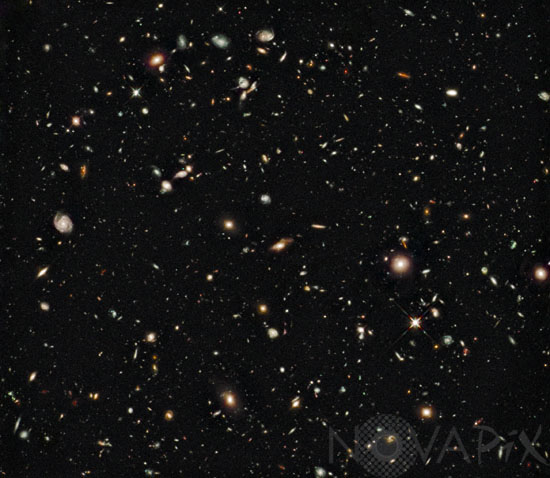Photo Agency - Astronomy - Space - Nature

Distant galaxies
author: Nasa/ESA/Novapix
reference: a-gax97-00037
Image Size 300 DPI: 19 * 17 cm
This is the deepest image of the universe ever taken in near-infrared light by NASA's Hubble Space Telescope. The faintest and reddest objects in the image are galaxies that correspond to "look-back times" of approximately 12.9 billion years to 13.1 billion years ago. No galaxies have been seen before at such early epochs. These galaxies are much smaller than the Milky Way galaxy and have populations of stars that are intrinsically very blue. This may indicate the galaxies are so primordial that they are deficient in heavier elements, and as a result, are quite free of the dust that reddens light through scattering.
The image was taken with Hubble's newly installed Wide Field Camera 3 (WFC3), which collects light from near-infrared wavelengths and therefore looks even deeper into the universe. The light from very distant galaxies is stretched out of the ultraviolet and visible regions of the spectrum into near-infrared wavelengths by the expansion of the universe. Hubble's WFC3 took this image in late August 2009 during a total of four days of pointing for 173,000 seconds of exposure time. The representation is "natural" in that blue objects appear blue and red objects look red. The faintest objects are about one-billionth as bright as can be seen with the naked eye.
Contact : Stéphane Aubin +33-(0)9-51-26-53-76
© Novapix - All rights reserved


